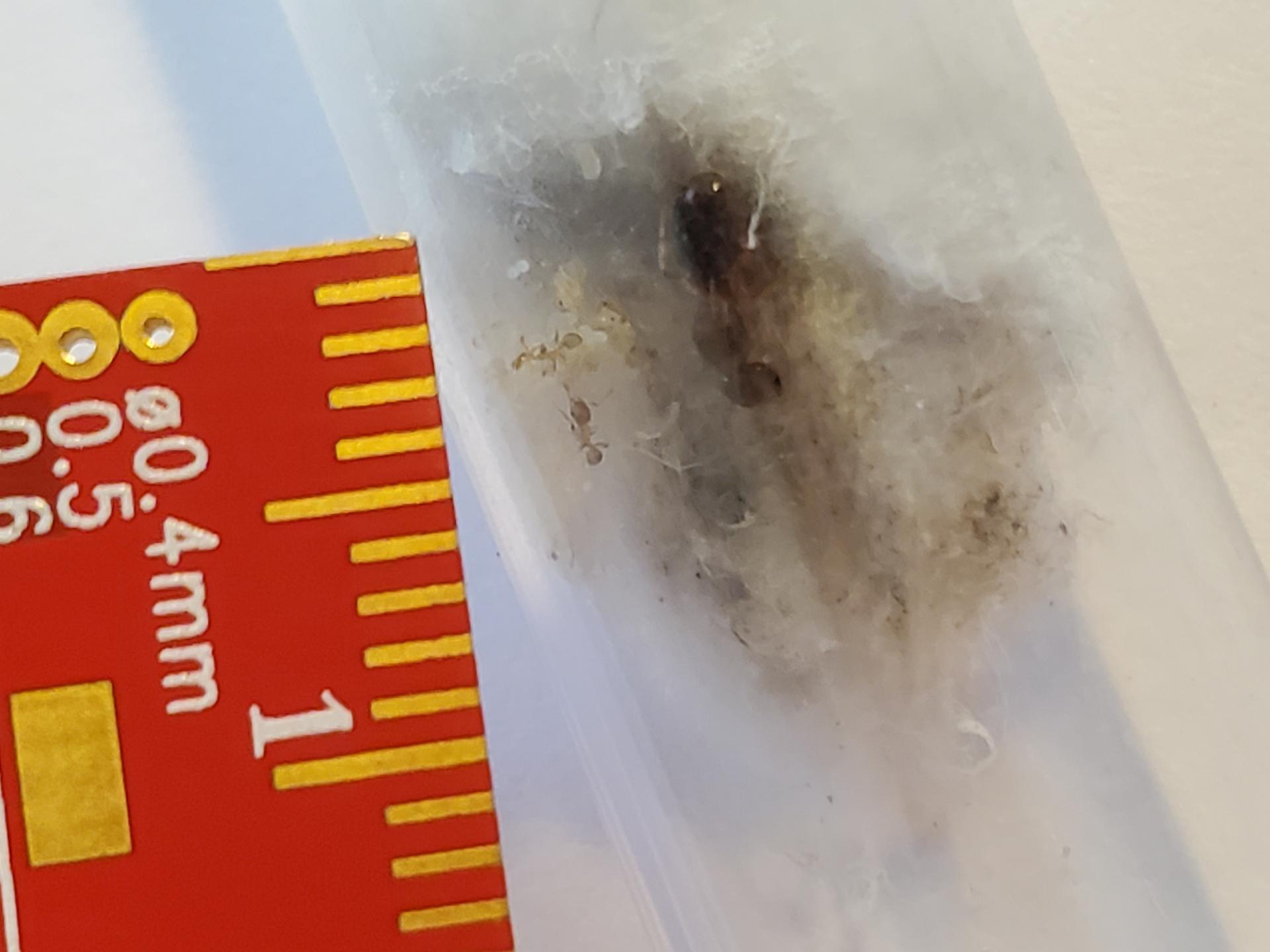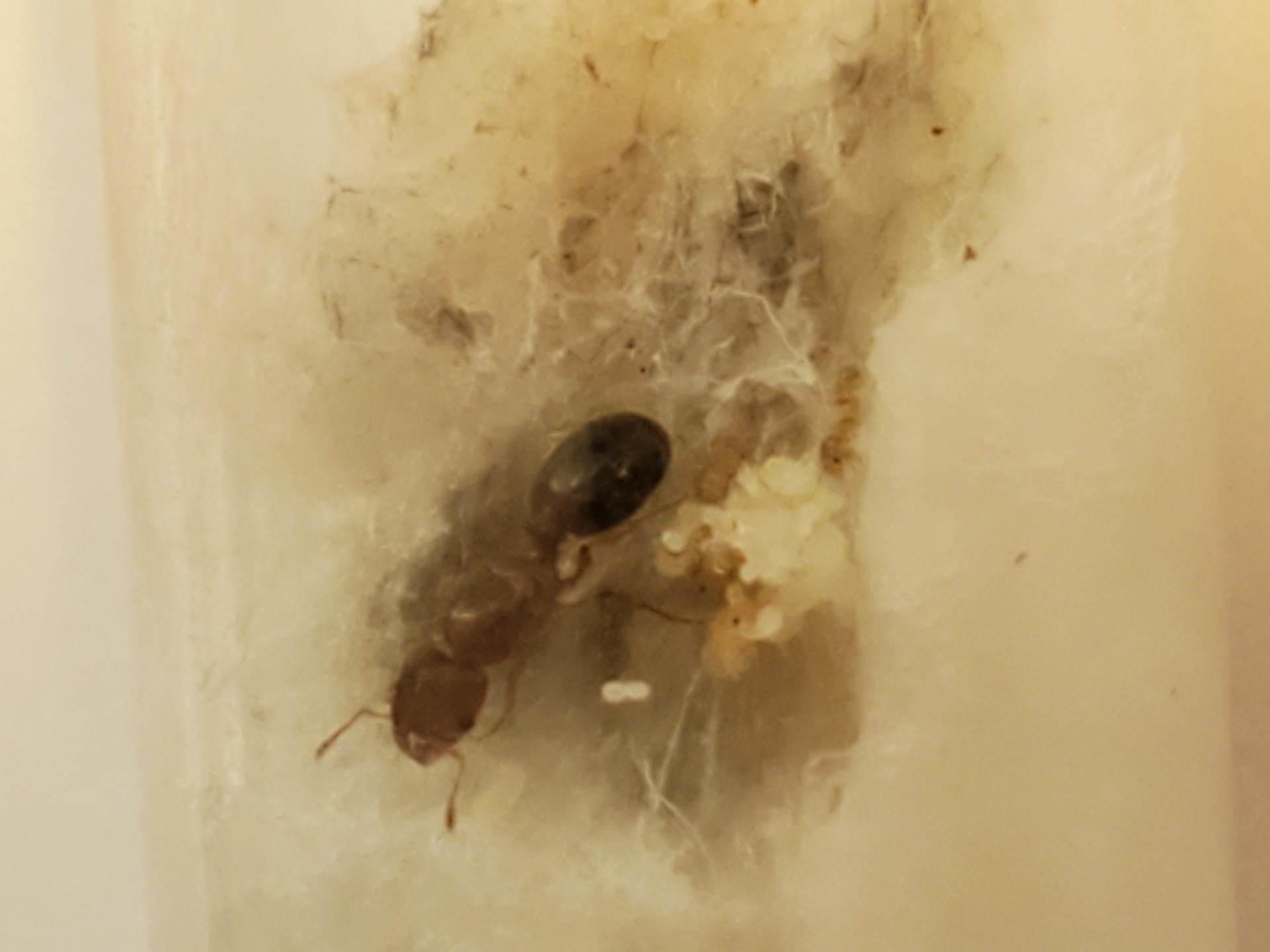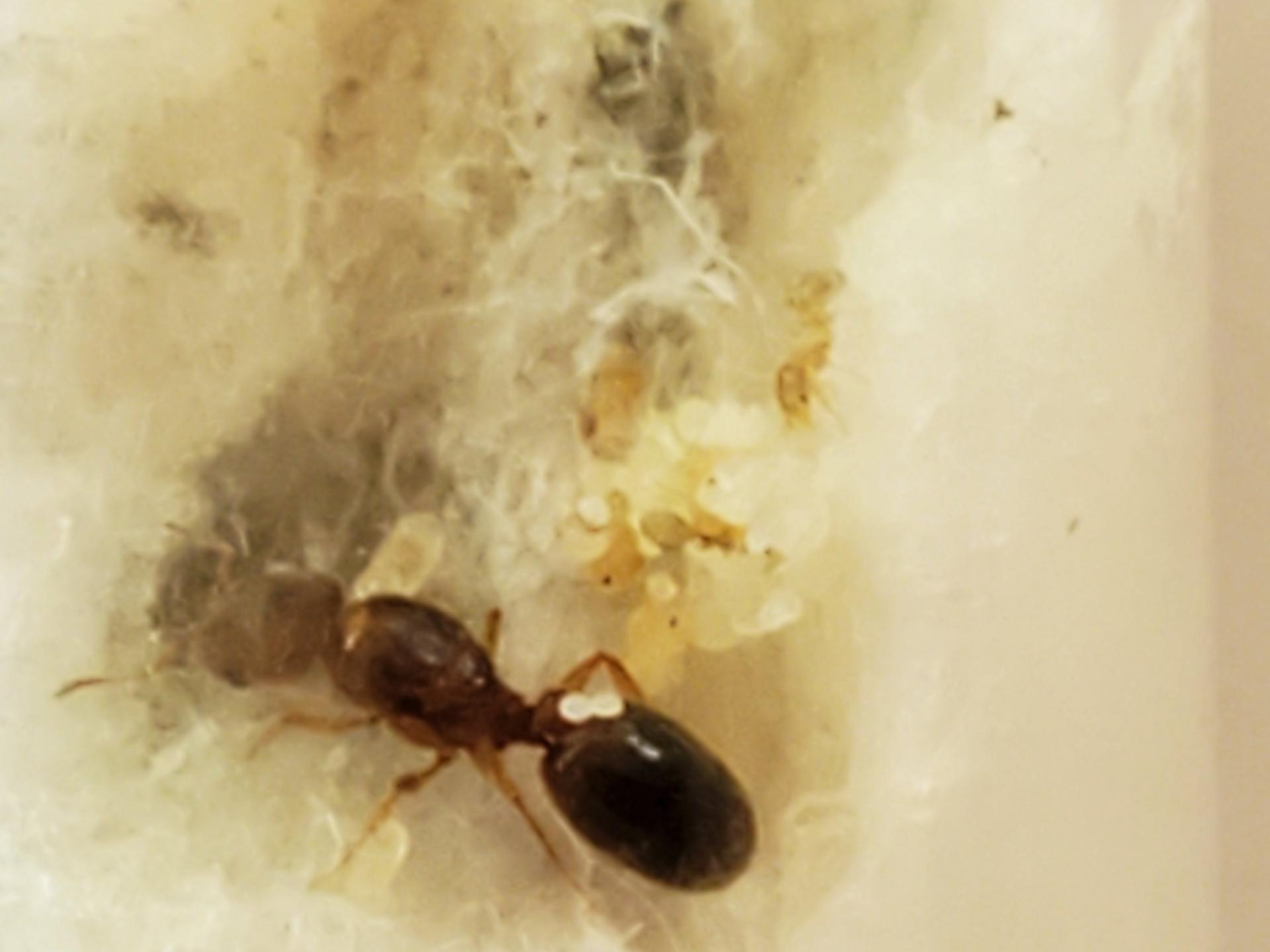Body:
1. Location of collection Neighborhood, Huntsville Alabama
2. Date of collection - 6.10.2021
3. Habitat of collection - Heavily shrubbed suburb.
4. Length - 6mm?
6. Distinguishing characteristics - very small, large head, anticipating more big headed ants. Confused her with Solenopsis Invicta like I did the first time I caught a Pheidole except i noticed a couple mm size difference this time. Her spawn rate has been notabley slower than the invictas I caught the same day. They're at 10+ workers while this queen has 1 moving worker.
9. Nuptial flight time and date - 6.10.2021

















